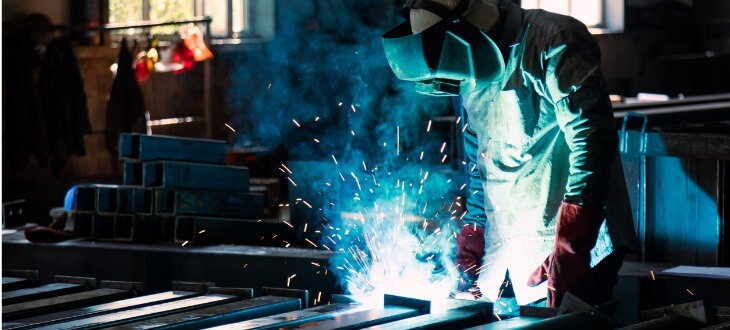There are many questions about welding pot metal. This is a popular way to reuse the scrap metal that you have leftover from your welding. Let’s dig into what pot metal is, the welding process for pot metals, and the advantages of using pot metals.
What is Pot Metal?
Pot metal is a term used to describe an alloy of generally more common, less precious metals with a low melting point. Typical pot metals include zinc, lead, aluminum, copper, and more; there is not a specific material mix.
Fun fact: pot metal got its name from the early automobile industry, as factories would gather metal scraps from manufacturing and melt them in a pot to be used for other items. Before plastic became the norm, pot metal used to be very popular. In today’s landscape, pot metal is used where plastic cannot be.
About Pot Metal
Pot metal is a way to recycle old materials. Machine shops will take the materials they are not using in manufacturing and melt them down for parts. With pot metal, lower melting points are the norm.
Iron can only be mixed in small quantities because adding too much iron will raise the melting point of the metals collected as a whole. This results in making them harder to work with.
There is no exact formula for pot metal. Because it is a mixture of metals, pot metal tends to melt at a lower temperature than pure metals.
Can you weld pot metal?
You can weld pot metal! This may be a challenging job, but it is the most cost-effective option.
The best method to use in this situation would be TIG welding. However, this will require knowledge before you start welding. Additionally, if you know how to work with aluminum that is a huge advantage, as there may be some in the mix.
When welding pot metal, use low-temperature settings and weld slowly. Work the pot in five to ten-second intervals, which will allow your pot metal to cool between welding. If any flowing starts to occur, stop immediately, as you may permanently ruin your project.
If you want to weld your pot metal to steel, there is a different process. This process would include:
- Prepare your steel, pot metal, and welding area.
- Protect yourself with a welding coat, welding mask, gloves, etc.
- Secure the correct items, such as the suitable alloy rods for your pot metal.
- Insert the electrode into the collect.
- Choose the correct electricity options. Additionally, set the air setting to five seconds to prevent oxidation or rusting on your steel.
- Turn on the gas.
- Ensure your electrode can move freely and will not be tangled in cords.
- Begin welding. Ensure your electrode is around an inch from the surface of your steel and pot metal.
Advantages of Using Pot Metal
There are many advantages to using pot metal in your projects. These advantages include:
- It’s Cheap: Since you use leftover material from your products, you do not have to spend extra money on new materials.
- You Can Experiment With It: As pot metal is so inexpensive, you can experiment with it without breaking the bank or feeling bad for making mistakes. This is ideal if you want to try something before you’re fully committed to the idea.
- You Can Recycle: As stated, you use leftover products from your shop. Therefore, it is a form of recycling. You can use every extra piece of your metal to make pot metal.
- It’s Very Efficient: Since pot metal has multiple metals, you may have a sturdy and decent product if you weld it correctly.
Visit Tampa Steel & Supply for Quality Metal and Metal Processing Services
Do you need help with metalworking and keeping your metal fresh? The experienced professionals at Tampa Steel & Supply are here to help. We provide the highest quality of services to our customers.
Request a Quote Online
Or Call Tampa Steel & Supply at (813) 241-2801

